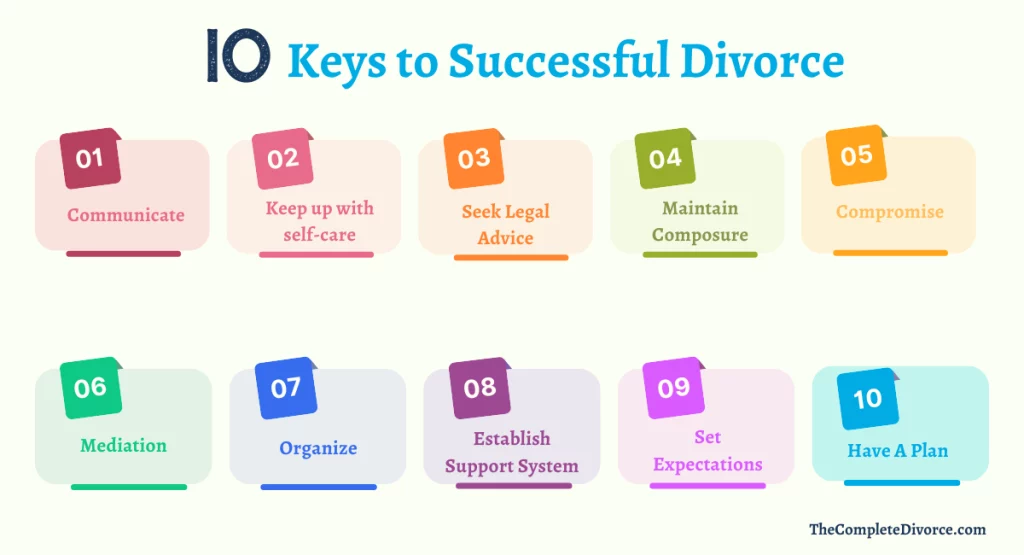
Share
Child Custody Timeshare Schedule for Divorce in California

Dina Haddad
Founder & Attorney Mediator
I’m Dina Haddad, a family law attorney-mediator in California. I’m so tired of couples not having a process that’s easy to complete their divorce. They are getting lost, wasting time and money, and beyond frustrated with their results.That’s why I created TheCompleteDivorce. I took my successful mediation practice and condensed it into an affordable and winning program.

Share

Timeshare Schedules
The Child Custody timeshare schedule details determine who your children will be with for the school year or regular schedule, the holidays, and the summer. You want to create a schedule that is age appropriate and well-suited for your children. The basic starting point is the 50/50 timeshare schedule, which has three variations. Depending on your children’s needs, 50/50 may not work. One parent may need to have more time because the children may be too young or one parent can’t care for the children 50% of the time because of other life issues, like a more taxing work schedule.
Also, some parents may want the children to have fewer transitions during the school week. For both scenarios, you can address this situation by starting with a schedule that works now but increasing to an equal timeshare over time. Alternatively, you can start with an equal timeshare as a trial period, and if it doesn’t work, try another plan.
The three popular 50-50 plans
- The week on and week off
- 2-2-5-5
- 2-2-3
They are used for the school year schedule and the summer schedule.
Week On and Week Off
The week on and week off is ideal for young adolescents and teenagers. The children spend one week with one parent, then the next with the other. A good day for the exchange is Friday after school so the receiving parent has time to transition with the children, enjoy some weekend time, and then prepare for the school week. With this schedule, there are fewer exchanges, which older children really appreciate. Some parents are hesitant to impose any schedule on older children but the parent that is not at the family home will have a harder time seeing their children.
The children will be resistant to moving from one home to another, especially with their school commitments and extracurricular activities. This schedule meets them halfway and allows both parents time with them.
2-2-5-5 Schedule
The “2-2-5-5” schedule is also good for older children but works for younger children too. In this schedule, Parent One always has Mondays and Tuesdays; and Parent Two always has Wednesdays and Thursdays. The weekends rotate from Friday morning to Monday’s drop-off to school. The advantages of this schedule is its predictability. The parents and children know where you are going during the school week. It’s also an easier schedule for employers. If you have Mondays and Tuesdays, your boss knows those days you leave early and you can stay later on Wednesdays and Thursdays.
Also, children are not away from any parent for more than 5 days. If you are considering this schedule for younger children, you need to be careful that five days is not too long for them to be away from either parent, particularly if one parent has been the primary caregiver. It doesn’t mean you won’t use this schedule later, but you might need to start with another schedule and gradually move to this one.
2-2-3 Schedule
The “2-2-3” schedule is ideal for younger children because the children are never away from either parent for more than three days. In Week One, Mom has Monday and Tuesday and Dad has Wednesday and Thursday. In Week Two, Dad has Monday and Tuesday and Mom has Wednesday and Thursday. The parents then alternate weekends so that there’s not more than a 3-day period. This schedule is the most difficult to follow of the three schedules because it is constantly changing.
In any of these schedules, you can modify them to fit your needs. In the Week On/Week Off, the non-custodial parent might have a Wednesday night dinner or overnight, to break up the week. In the 5-2-2-5, you can also add a dinner in the 5-day spread. A good day would be Friday and Sunday. You can also create your own schedule. Some choose to exchange the children every other day, temporarily, while the children are young. This eliminates too many nights away from either parent.
If a 50/50 timeshare plan does not work for your family, there are many other options. One parent might be the primary caregiver, and the other parent has Wednesday after school until Thursday morning drop-off and every other weekend. You can change the Wednesday overnight to just a dinner and add another overnight during the week. The options are pretty endless.
Holiday Schedule
In addition to the school or regular schedule, include a Holiday Schedule. We have included one for you to download in our program, The Complete Divorce. The Holiday Schedule is very important. Identify which holidays will be part of the holiday schedule; national holidays, religious ones and school breaks. Decide the start and end time for each holiday, and the location of the pick-up or drop-offs.
If Christmas Eve is a holiday, you might say it starts at 10 a.m. on December 24th and ends on Christmas Morning at 10:00 a.m. Then determine who will get each holiday. It’s very common to alternate holidays. Mom gets even years and Dad gets odd years.
If your work schedule changes in the summer, like a school teacher, you may need a different schedule for that time. Otherwise, your schedule will remain the same. If you do keep it the same, consider each parent having some summer vacation time. For example, you agree each parent gets 10 consecutive days of summer vacation. Parents select their days by April 1st of that year. In case of conflict, Mom has priority to select her days in odd years and Dad in even years.
Whatever timeshare schedule you choose, you need to follow it. Especially in the beginning. This establishes a routine for you and your children. It also lets your children know that you are serious about the schedule, you are working together, and your children can rely on the schedule to know where they will be that day.
After you have all adjusted to the schedule, you can be more flexible and request changes from the other parent. If you do this too soon, you might unravel the entire schedule because the exceptions will be more important than the rule. Even so, life happens. Remember it’s in your and your children’s best interest to be flexible and patient with your spouse.
At TheCompleteDivorce, we provide you with what you need to successfully do your California divorce on your own. We provide all the required family law court forms in our automated forms program, all the video tutorials, and an automated customizable Marital Settlement Agreement (Divorce Agreement). If you need more help, you can get our package that includes time with a divorce mediator.
Before you go, consider if we can help you. We have helped thousands of couples in California. Our guided DIY divorce is successful and cheap!






